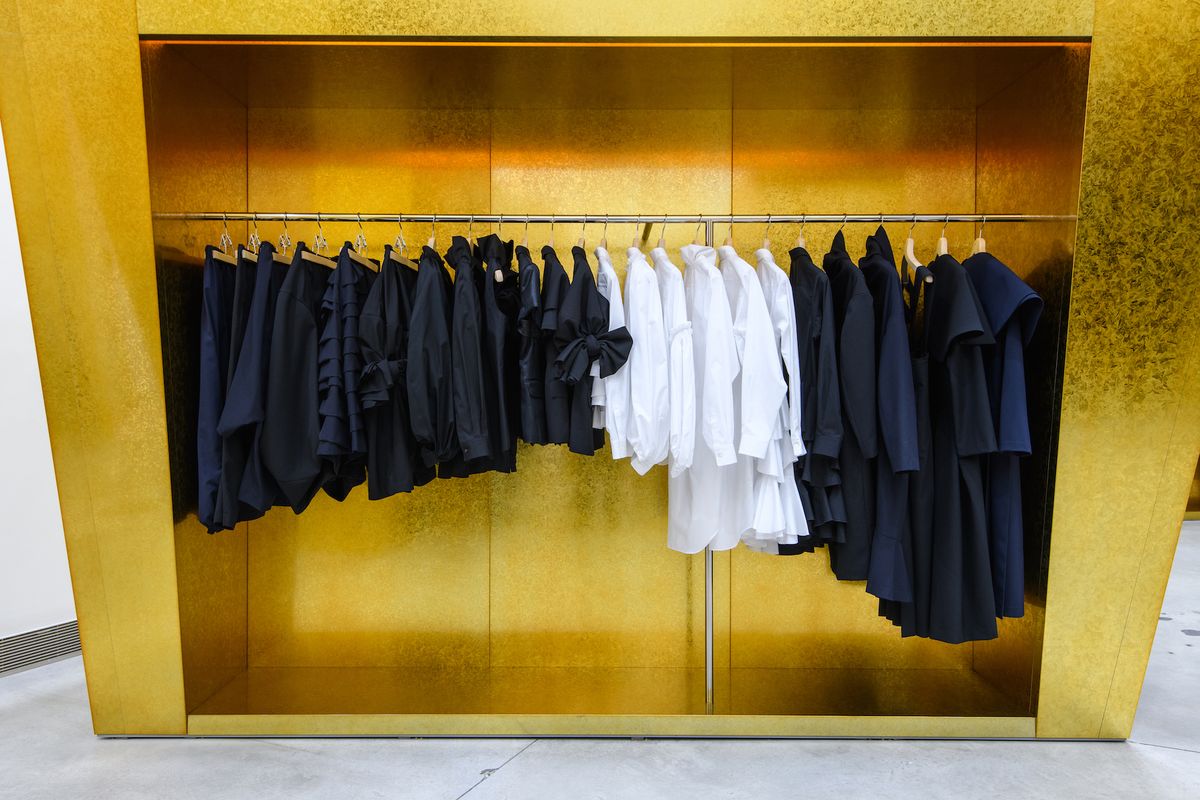Introducing the Tricks Behind Cost Effective Boutique Fashion
Wiki Article
Discovering the Development and Effect of Garments on Modern Style Trends
The advancement of clothing has significantly influenced modern style fads, combining historic criteria with cutting-edge innovations. Iconic numbers like Coco Chanel and Yves Saint Laurent changed the style market by introducing concepts that focus on convenience and access, which proceed to resonate today.Historical Style Influencers
In the tapestry of style history, certain figures have left an indelible mark, forming the patterns and styles that specify whole ages. Coco Chanel, an innovative designer, redefined females's style by presenting comfortable, elegant apparel that departed from restrictive bodices. Her renowned Chanel suit and little black dress have actually ended up being ageless staples in closets worldwide. Christian Dior's post-war "New Look" in 1947, with its event of femininity with full skirts and cinched waistlines, noted a return to luxury and has proceeded to influence developers.Elsa Schiaparelli is an additional critical number, renowned for her avant-garde styles that incorporated surrealist art, working together with Salvador Dalí to create whimsical items that challenged traditional appearances. Her innovative usage of shade and bold patterns resounds in contemporary fashion. Yves Saint Laurent, meanwhile, equalized high style with prêt-à-porter collections, bringing runway styles to the masses and establishing a criterion for modern ready-to-wear lines.
These enthusiasts, to name a few, not only transformed style in their times however likewise set enduring patterns that reverberate in today's apparel industry, giving a foundation upon which contemporary designers continue to develop and introduce. Their legacies underscore the value of creative thinking and bold in style's ever-evolving narrative.
Technical Innovations in Fashion
Amidst the dynamic landscape of the apparel industry, technological developments stand at the center of innovation, reshaping how designers create and consumers engage with style. The integration of 3D printing has changed layout procedures, making it possible for developers to explore complicated frameworks and sustainable materials that were previously unthinkable. This innovation helps with fast prototyping, decreasing waste and accelerating production times.
Smart fabrics, embedding innovation right into textiles, are also transforming the industry. Technologies like self-cleaning and temperature-regulating textiles offer improved capability and comfort. Wearable technology, including features like physical fitness monitoring and communication, adds a new measurement to style, merging visual appeals with usefulness.
Cultural Shifts and Style
As technical innovations remain to improve the fashion business, social changes are just as influential, redefining style and customer preferences. Recently, the surge of social networks systems has actually increased the circulation of international style fads, permitting varied social influences to assemble and coexist. This digital interconnectivity has facilitated the rapid exchange of ideas, bring about an extra inclusive and diverse analysis of design that shows the multifaceted nature of modern culture.Social understanding and recognition have actually motivated developers to draw inspiration from a broader range of historical and ethnic contexts, incorporating typical themes with contemporary looks. This i thought about this fusion has caused fashion that resonates with a bigger target market, promoting a feeling of identification and belonging across different demographics. Additionally, the raising need for customization has actually driven brand names to offer customizable options, making reference it possible for customers to reveal originality while reflecting their social heritage.
Moreover, changing social worths have impacted style, with inclusivity and variety becoming main motifs. The market has actually started to welcome versions and influencers of numerous physique, ethnic cultures, and sex identities, tough standard appeal criteria. This transformation highlights the power of cultural shifts in shaping the future of fashion, as style comes to be a much more genuine expression of collective and personal identification.
Sustainability and Modern Design
While the fashion business continues to advance, the crucial for sustainability has become significantly urgent, affecting modern-day layout techniques. This change intends to resolve ecological worries and honest factors to consider, bring about a reevaluation of conventional manufacturing methods. Designers are now incorporating lasting products, such as organic cotton, recycled polyester, and eco-friendly materials, right into their collections, decreasing the environmental impact of fashion. The increase of slow-moving fashion, which highlights high quality over quantity, encourages consumers to buy timeless pieces rather than transient trends.In addition, modern-day layout is identified by its advancement in decreasing waste and advertising circularity. This technique not just alleviates ecological effect however also improves the social obligation of fashion houses.

Future Trends in Fashion

Sustainability will certainly remain to be a driving force in forming future fashion patterns. The market is significantly embracing environmentally friendly materials and ethical manufacturing approaches, reacting to a growing consumer need for liable techniques. Technologies such as bio-fabricated products and closed-loop recycling systems are set to redefine how garments is generated and taken in, lowering ecological effect while keeping design and high quality.
Social shifts, including the increase of inclusivity and variety, will certainly additionally play an essential function. As culture ends up being more familiar with social issues, style is expected to end up being a system for expression and modification. Designers will likely concentrate on developing collections that show a more comprehensive series of experiences and identifications, championing depiction and ease of access.
Verdict
The advancement of garments substantially affects modern fashion fads, where historic impacts merge with contemporary designs. This ongoing evolution underscores style's role as a mirror to social worths and technical advancement, suggesting a future abundant with innovation and inclusivity.The evolution of garments has considerably influenced modern-day fashion patterns, combining historic precedents with cutting-edge innovations.Among the dynamic landscape of the style market, technological developments stand at the forefront of innovation, improving just how designers create and customers involve with fashion.While the style market continues to advance, the essential for sustainability has come to be significantly urgent, affecting modern design methods. As sustainability ends up being ingrained in modern layout, it leads the means for a more conscious and accountable style industry.
The advancement of clothing substantially affects modern-day fashion fads, where historic influences combine with contemporary layouts.
Report this wiki page